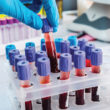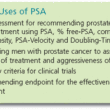Why Does Dormant Prostate Cancer Come Back?
Even after apparently successful treatment, prostate cancer can unfortunately return, sometimes growing and spreading rapidly many years after the initial diagnosis. This occurs in prostate cancer when cancer cells leave the prostate early in the cancer’s development and hide in distant places in the body, such as the bones.

Unlike regular cancer cells that divide rapidly and cause tumor growth, these hidden cells stop dividing entirely for years or even decades. Without any growth, the “dormant” cancer cells are very difficult to detect—until they suddenly flare up and begin growing rapidly, causing metastatic cancer in patients who thought they had been cured.
But what causes these cells to become dormant, how and where do they hide, and—critically—what happens to make them start growing? The answers have been as elusive as the dormant cancer cells.
Now, a new research initiative aims to shed light on the unknowns surrounding cancer cell dormancy. By unravelling the mysteries, researchers could find ways to detect these dangerous cells and then eliminate them or stop them from waking up.
The research initiative is called the Grand Cancer Challenges, sponsored by the National Cancer Institute and Cancer Research UK. These organizations are the world’s leading funders of cancer research.
The goal of the research challenge is to understand the mechanisms behind these dormant cancer cells, on a molecular and cellular level, so that the cells can be targeted for treatment.
The Grand Cancer Challenge program will focus on several other challenges in cancer research in addition to the cancer cell dormancy challenge.
Dr. Catalona and his research collaborators in the Northwestern SPORE (Specialized Program of Research Excellent) have been considering how they can collaborate in a possible Prostate SPORE-wide proposal for the Cancer Grand Challenge to study cell dormancy.




















